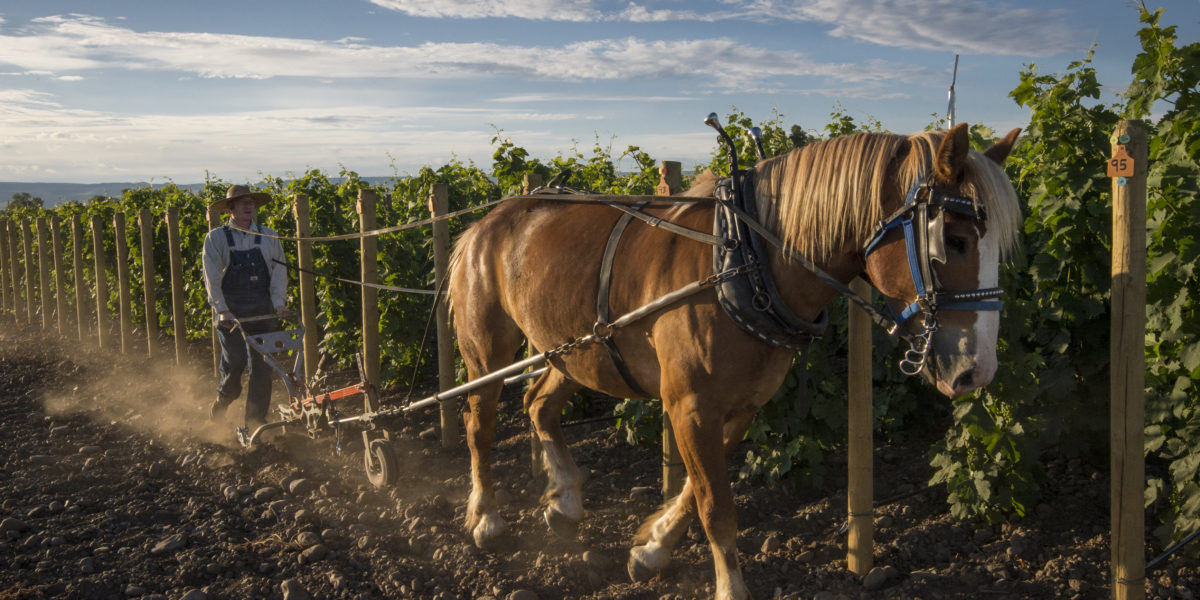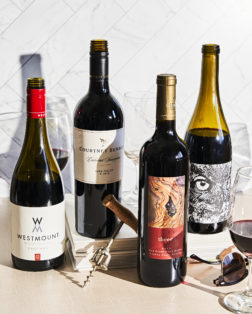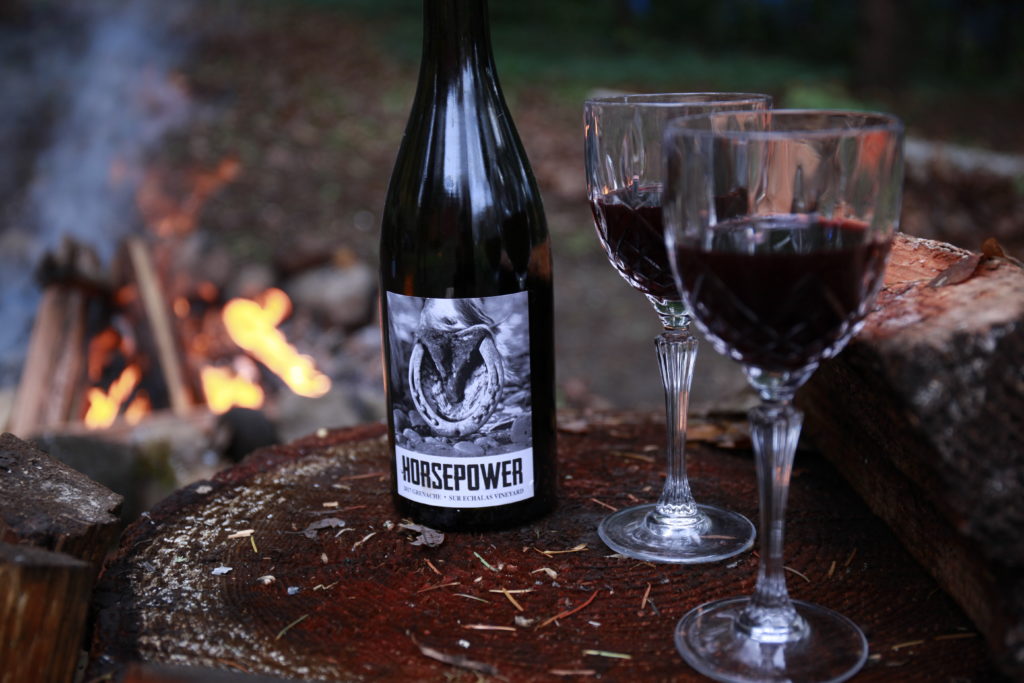
This Vineyard Is Farmed Entirely with Horses. Here’s How—and Why
Horsepower Vineyards’ food-friendly Grenache and Syrah take time to savor and appreciate.

Andrea Johnson Photography/Courtesy of Horsepower Vineyards
The vines are planted either 3 or 3 ½ feet apart, each set of rows the same slim width—just enough for a lumbering draft horse to get by.
Horsepower Vineyards’ team starts in the early hours, bringing in the American Belgian and Percheron horses from the pasture, feeding them hay and some oats. They brush them, clean their hooves, “give them a look over, make sure nobody kicked anyone last night,” says equine and vineyard manager Joel Sokoloff.
Once they’re harnessed, the team gets to work.

Andrea Johnson Photography/Courtesy of Horsepower Vineyards
For three to six hours per day, this equine operation cultivates vineyards in the Walla Walla Valley, a region that straddles both Oregon and Washington. During the hopefully wet winter months, the horse-drawn plows break up the soil surface, Sokoloff says, before the vines are uncovered and they continue “to work the ground.”
“Every time we go around and cultivate, it’s a total of 44 miles of walking,” Sokoloff says. “We do that at least 14 times a year, so those guys are in good shape.”
The American Belgian horses range from Red and Bayard to Cielo and Fuego; the Percherons are Bob and Bill.

Andrea Johnson Photography/Courtesy of Horsepower Vineyards
French winemaker Christophe Baron first discovered the ancient riverbed more than two decades ago, and planted among the fist-sized basalt stones. They were similar to vineyards he saw in the Northern Rhône. He grew up in a centuries-old Champagne house; his grandfather worked with draft horses until purchasing a tractor in 1947.

The Sunset Wine Club
Wine Club members receive:
- 6 featured wines, shipped every 3 months
- Tasting notes and suggested pairings for Sunset recipes
- The first look at rare gems in the Sunset wine shop
- Exclusive member events
Now, Baron continues the tradition.
“Equine farming is the most gentle way to cultivate such difficult ground in such high density,” Sokoloff says.
As farmers continue to debate how much to till—if at all—Sokoloff points to differences in terroir. Horsepower keeps a cultivated vineyard floor due to “heavy soil,” which can compact and make it difficult for the horses to cultivate.
“It does help us take advantage of the stony ground that we’re in,” Sokoloff says. “The stones, if they’re not exposed, don’t help lend themselves to the extreme diurnal shift that is part of what make the wine so unique.”

Courtesy of Horsepower Vineyards
The food-friendly Grenache and Syrah are less fruit forward with more density, salinity, and earthiness. Decant these bottles at least a half-hour before you’re ready to drink them. They take time to savor and appreciate.
Because the vines are so close together, they essentially create their own microclimate for the fruit, Baron says. “Most of the time the fruit is in the shade,” Baron continues. That results in lower sugar levels, which means less alcohol in the bottle, “which is great!” Baron says.
“They are not for everybody,” Baron says. “But those wines are crafted in a very traditional way. It’s more Old World than New World.”
